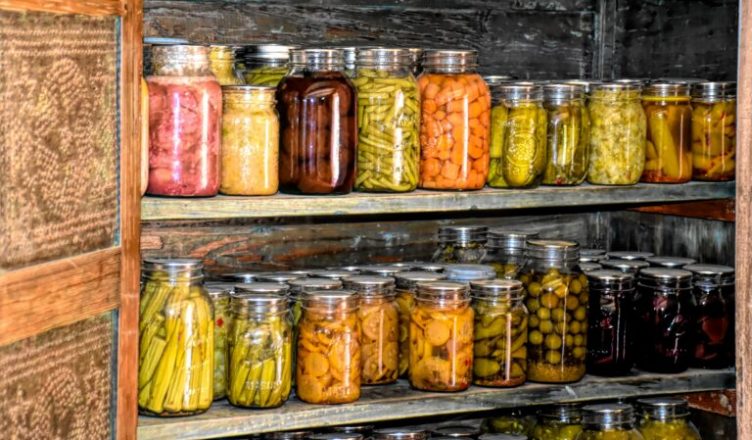The future has become increasingly unstable for many of us in recent times. Therefore, it makes a lot of sense to work on building up an emergency food pantry that will allow you to survive for a very long time using your own food resources and preparing food that will last.
There are a number of food storage solutions that are designed to last for many years.
You can approach the task of building up a store of emergency foods in a number of different ways. The simplest way would be to accumulate an extra amount of non-perishable foods that you would eat on a regular basis. A more professional approach that is often favored by preppers would be to buy a range of special food that has been specifically designed to last considerably longer than anything you will find on the supermarket shelves.

Let’s take a look at both of these methods in greater detail. There are also some pros and cons to consider that you need to be aware of when you are planning how to prepare food reserves that will last you through an emergency scenario.
Work on surviving for a minimum of two weeks
There are no hard and fast prepping rules when it comes to how much food you store. However, the accepted minimum is to have enough supplies to last you for at least two weeks.
You should have a two-week stock of non-perishable food that is easy to prepare. That should be your base point when preparing an emergency supply stock list. It might be that you think you have a fair amount of non-perishable supplies in your cupboard a lot of the time anyway. But the average home tends to have a level of stock that would last them hours rather than weeks.
DIY or prepared food kits?
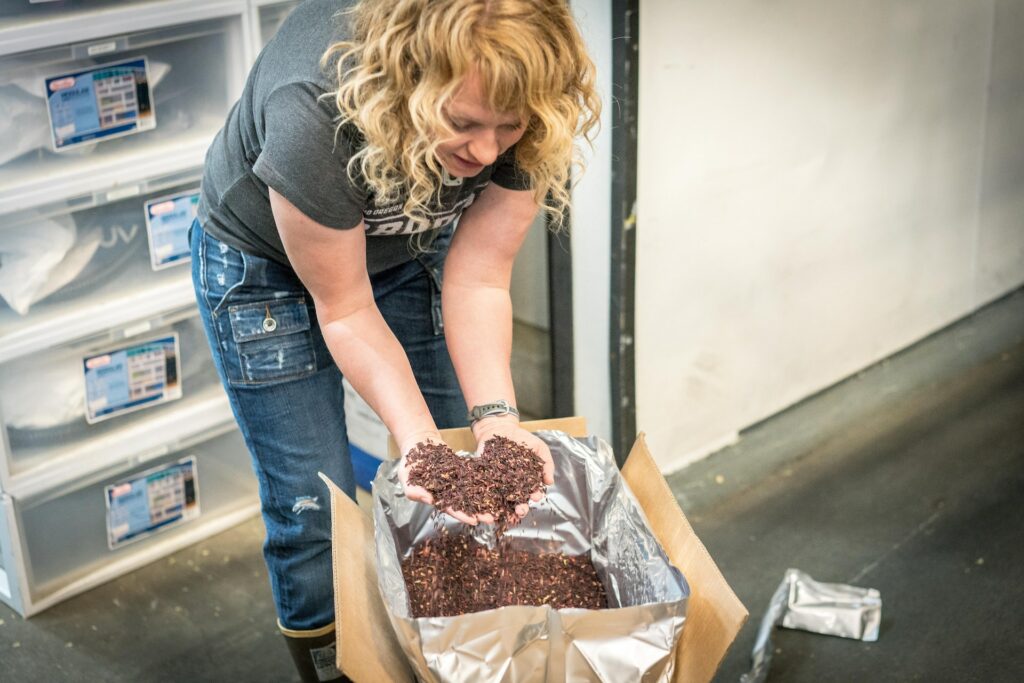
It is perfectly understandable that you might prefer to take what you consider the cheaper prepper route and build a DIY supply of essentials rather than pay for an off-the-shelf solution.
However, you may not find it as easy and cheap as you think to go down the DIY path. Trying to work out the right balance of dry goods such as rice and beans that are going to see you through a crisis can be difficult to estimate. It becomes particularly challenging when you are also trying to fulfill your daily calorie intake requirement and eat as healthily as possible, given the circumstances.
If you buy a readymade survival food kit there are a number of distinct advantages to consider. One of them is the fact that when you buy one of these kits you benefit from having a professional make all the right calculations regarding how to deliver the right calories you need each day.
If you buy a typical two-week food survival kit, for instance, you can be sure that two people will enjoy a balanced and nutritional meal that is within the right calorie range.
When you look at how convenient, healthy, and tasty a good kit can be, the cost can often be justified considering all the boxes it ticks.
Understanding the foundations of successful prepping
Once you understand the fundamental point of prepping is to minimize the disruption to your life that can come after a major event it will help you to prepare in the right way.
Many inexperienced preppers tend to make the same errors when putting their contingency plans in place. A classic move would be to search out a single checklist that seems to meet your criteria and follow that path without reading in more detail about what prepping is all about.
There are a couple of aspects to prepping that should be the cornerstone of plans.
Make sure you have sufficient financial resources and you know your health requirements can be met in an emergency situation.
Create a checklist of key points to ensure that your home is capable of sustaining you for a period of at least two weeks.
Make sure you are in a position to vacate your home and implement emergency measures at a moment’s notice.
Learn some core prepping skills and make sure you practice what to do.
You might also want to connect with some like-minded people who will be able to share their ideas and experiences. This can often make prepping seem far less daunting and give you a good sense of what you need to do without being overwhelmed.
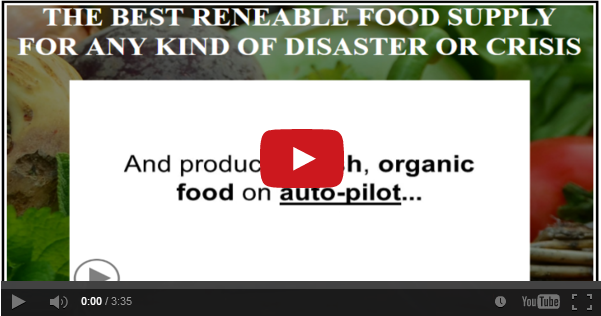
Why do official guidelines suggest 72 hours of supplies is enough?
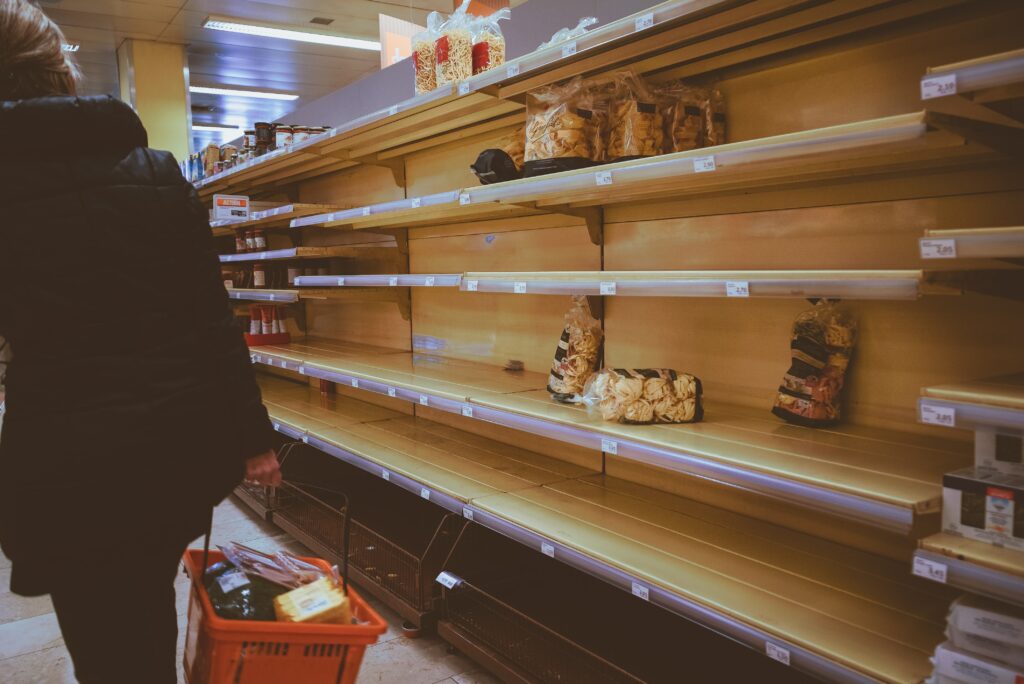
If you visit the Ready.Gov website created by the Department of Homeland Security you will see that their definition of being prepared means having enough food, water, and other supplies to last for at least 72 hours.
Whilst having enough supplies for 72 hours is considerably better than not being prepared at all this advice is not supported by a number of other respected organizations. The Red Cross, for instance, now suggests that you should have access to three days of supplies in the event of evacuation and two weeks of supplies if you are staying in your home.
It is hard to justify doing the bare minimum of having just 72 hours of supplies when you consider that the American military says that it will take them an average of eight days to fully mobilize a response to a major crisis.
If you are waiting for help for that length of time it is abundantly clear that following the suggestion of having at least two weeks of supplies would be the better preparation plan.
Preparing food that lasts
Having established the ground rules for prepping, it’s time to take a closer look at what sort of things you should be looking for when compiling your shopping list.
There is a basic criterion that is advisable to follow so that your prepper pantry has a good stock of items that meet a variety of different storage and usage requirements.
It is a good idea to search out products that offer a long shelf life. You can get free-dried food that lasts up to 30 years but, in general terms, to meet the criteria of a long shelf life a food item needs to be able to last for at least a year.
Look for products that are easy to store and offer durability. Items in a can are easy to store and won’t need any special storage requirements.
Be mindful that in an emergency you might not have access to cooking utensils or other cooking aids. That’s why it is a good idea to have a stock of foods that can be eaten without any preparation or need minimal preparation such as reheating or rehydrating.
You also want foods to be able to meet your nutritional needs. You don’t have to stock your store with everything healthy but try and achieve a reasonable balance.
If you are working with limited storage space you should consider stocking food items that are high in calorie density. That way you can get the calories you need without needing a big pantry to achieve that daily aim.
There is a storage model that you might see mentioned that is FIFO. This stands for First In First Out. In other words, the idea is all about storing what you use and using what you store, on a rotation and replenishment basis.
Take advantage of shelf-stable or non-perishable items
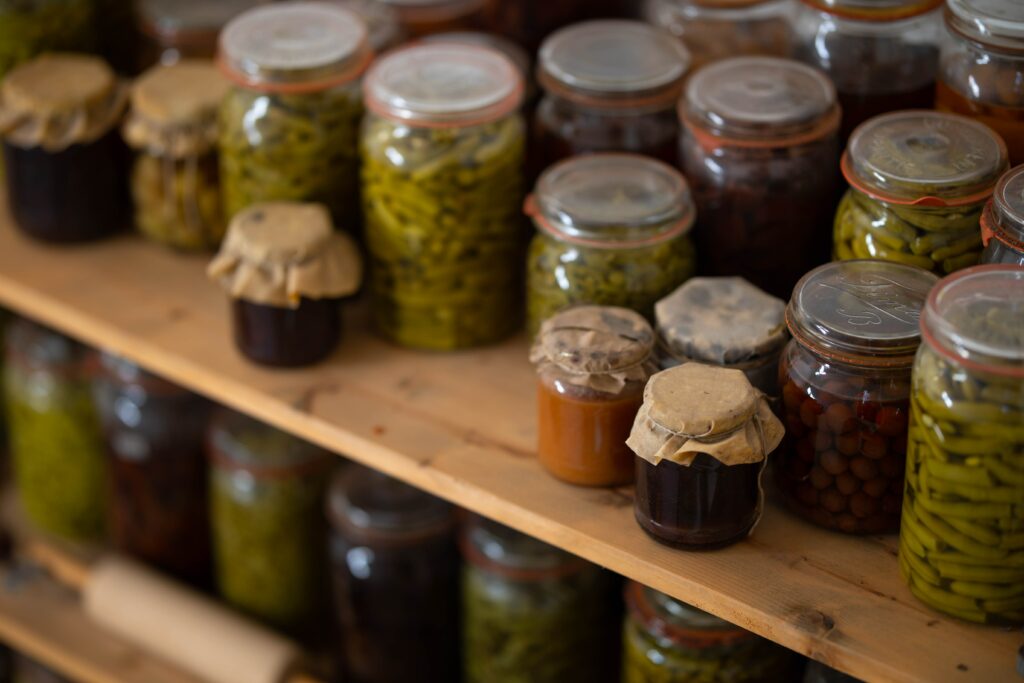
You can build up your prepper pantry over a period of time by adding some extra items to your weekly shop. This helps you to budget more easily. You can also take advantage of the FIFO concept by keeping a close eye on your stock expiration dates.
In principle, prepping becomes easier when your food lasts as long as possible. That is why you need to focus your attention on so-called shelf-stable and non-perishable items.
What is the definition of a food item that is classed as shelf-stable?
If a food can be safely stored at an ambient temperature (room temperature) or on a shelf without any need to be refrigerated these are classed as being shelf-stable. Canned goods and foods stored in jars or bottles would meet these criteria.
Not all canned goods can be stored in this way and might require refrigeration. The storage instructions will be on the label and you should read these as well as looking for expiration dates so that you can select products that are non-perishable and shelf-stable for the longest possible time.
It takes a little bit of extra work to search through cans on a supermarket shelf for the longest expiration date but the effort is worth it, all things considered.
It should also be noted that the exact storage life of a product is quite difficult to predict with any degree of accuracy. Use the dates as a guide rather than a definitive use by date.
Providing the best food storage environment
As well as being diligent when it comes to selecting appropriate prepping products you also need to focus your attention on creating the best possible storage environment.
There are a number of key factors that can prove highly detrimental to your efforts to create a usable supply of food that is ready at a moment’s notice.
You need to minimize the threats that can degrade your items. The principal threats that you need to eliminate or control are heat and light, moisture, poor oxygen levels, and pests.
The bottom line is that the effectiveness of your ability to reduce these main threats to the longevity and condition of your food storage will often prove critical to how ready you are when the time comes to use your food items.
One solution that a number of preppers use to store dry goods efficiently and safely is mylar bags. When paired with oxygen absorbers and using sealed buckets to store your dry goods these bags will often prove to be the best way to keep everything as fresh and safe as possible.
Even if you can’t run to this sort of standard it is wise to focus on creating the best storage environment you can. Also, remember that “best before” dates conform to manufacturing guidelines. In reality, there is a good chance these products will last a lot longer, provided the packaging is secure and hasn’t been compromised.
A good number of shelf-stable foods can last for years beyond the expiry date printed on canned goods but you need to be vigilant as the can needs to be in perfect condition for those rules to apply safely.
Grains should be a priority purchase for your prepper store
Grains are almost the perfect prepper food solution. They store easily and as well as being nutritious they are versatile too.
The sort of grains that need to be on your list are classic staples such as rice (all types from long grain to Basmati are suitable), rolled oats, dried pasta, dried corn, and instant grits.
Beans and legumes should also be high on your list
When it comes to getting the protein and fiber you need for your diet you can’t go wrong with a supply of beans and legumes from your store.
Again, these are perfect prepper food solutions as beans and legumes store well and they offer a fair degree of versatility so you can choose items you really like.
Typical items for your list would be black and pinto beans, kidney beans, lentils, chickpeas, and black-eyed peas.

In addition to these staples, you should also look to accumulate some meats and other proteins, in cans.
Canned meat is not to everyone’s liking, but a country ham out of the tin can last almost indefinitely and will be a welcome addition to your menu when you are actually using your supplies in an emergency situation.
If you are savvy with your food selections you should be able to create a store of items that meet all of your daily needs and will be ready to go as and when you need it.
Do your research so that you can learn from other like-minded people about what works and what doesn’t when starting your prepping journey. You might also want to consider getting a helping hand with some food storage solutions that have been specifically created to meet all of your dietary needs in an emergency situation.
source : Cornelia Adams

